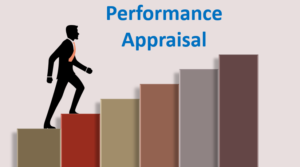In today’s competitive business landscape, organizations strive to optimize their human resources by implementing effective performance appraisal programs. Performance appraisal is a systematic process that evaluates an employee’s performance and contributions toward organizational goals. This article explores the significance of a performance appraisal program, its benefits, key components, implementation strategies, and best practices for success.
Contents
Introduction
A performance appraisal program is a structured approach to assess and manage employee performance within an organization. It provides a framework for evaluating individual accomplishments, identifying strengths and areas for improvement, and aligning performance with organizational objectives.
Understanding Performance Appraisal

The primary purpose of a performance appraisal program is to measure and enhance employee performance. It offers a platform for supervisors and employees to engage in constructive discussions, set performance expectations, and provide feedback for professional growth.
Performance appraisals can take various forms, including annual reviews, 360-degree feedback, self-assessments, and continuous performance management. Each type serves a unique purpose, enabling organizations to choose the most suitable approach based on their goals and culture.
Benefits of a Performance Appraisal Program
Implementing a robust performance appraisal program brings several advantages to both employees and organizations.
Enhanced Employee Performance
Regular performance evaluations provide employees with a clear understanding of their performance expectations and areas requiring improvement. This awareness motivates individuals to enhance their skills, knowledge, and productivity.
Clear Communication of Expectations
Performance appraisals enable managers to communicate expectations, goals, and performance standards effectively. Clear communication fosters a shared understanding of objectives, contributing to increased employee engagement and alignment with organizational goals.
Identification of Training and Development Needs
Performance appraisal programs facilitate the identification of employees’ training and development needs. By assessing performance gaps, organizations can design targeted training programs to enhance skills and competencies, resulting in a more capable workforce.
Recognition and Rewards
A well-designed performance appraisal program acknowledges and rewards exceptional employee performance. Recognizing and appreciating achievements not only boosts morale but also serves as a powerful motivator for employees to continue performing at their best. By linking performance with rewards, such as bonuses, promotions, or other forms of recognition, organizations foster a culture of excellence and drive employee engagement.
Stages of a Performance Appraisal Program

A performance appraisal program typically consists of several stages or steps that are designed to assess and evaluate the performance of employees within an organization. The specific stages may vary depending on the organization’s structure, culture, and policies, but here are the common stages involved in a performance appraisal program:
- Goal Setting: At the beginning of the appraisal period, managers and employees collaborate to set clear and measurable goals or performance objectives. These goals should align with the overall organizational objectives and provide a basis for evaluating performance.
- Performance Monitoring: Throughout the appraisal period, managers should regularly monitor and track the performance of their employees. This can be done through ongoing feedback, coaching, and periodic check-ins to ensure that employees are on track to meet their goals.
- Self-Assessment: Employees are often allowed to assess their performance against the established goals and objectives. This self-assessment allows employees to reflect on their strengths, weaknesses, accomplishments, and areas for improvement.
- Feedback and Evaluation: Managers conduct formal evaluations of their employees’ performance based on the established goals and objectives. This evaluation involves assessing the employee’s achievements, strengths, areas for improvement, and overall contribution to the organization. Feedback should be specific, and constructive, and provide actionable recommendations for development.
- Performance Discussion: Managers and employees engage in a performance discussion or appraisal meeting where the evaluation results are shared, and feedback is discussed. This meeting provides an opportunity for open and honest communication about performance, addressing any concerns or questions raised by either party.
- Development Planning: Following the performance discussion, managers and employees collaborate to create a development plan. This plan outlines the steps, resources, and support needed for the employee’s professional growth and improvement. It may include training programs, mentorship opportunities, stretch assignments, or other developmental activities.
- Performance Documentation: The appraisal program requires proper documentation of the performance evaluation and discussion outcomes. This documentation serves as a record of the employee’s performance and is often used as a reference for future evaluations, promotions, or decision-making processes.
- Follow-Up and Monitoring: After the appraisal process, managers continue to monitor the employee’s performance, provide ongoing feedback, and support their development. Regular check-ins help ensure that the employee stays on track and receives the necessary guidance to achieve their goals.
Implementing a Performance Appraisal Program
To successfully implement a performance appraisal program, organizations should follow a structured approach.
Establishing Performance Criteria
Organizations need to define clear performance criteria and standards. These criteria should be objective, measurable, and align with the organization’s strategic objectives. Performance indicators can include productivity, quality, teamwork, customer satisfaction, and other relevant metrics.
Training Managers and Employees
Proper training is essential for both managers and employees involved in the performance appraisal process. Managers should know delivering effective feedback, conduct fair evaluations, and guide development discussions. Employees need to understand the purpose of appraisals, their role in the process, and how to actively participate.
Conducting Performance Appraisals
Appraisals should be conducted regularly and consistently across the organization. Managers should schedule dedicated meetings with employees to discuss performance, provide feedback, and jointly set goals. These discussions should be documented for future reference.
Documenting and Reviewing Results
Accurate documentation of performance appraisal results is crucial for future reference and decision-making. Performance records can assist in identifying patterns, tracking progress over time, and making informed decisions regarding promotions, salary adjustments, or succession planning.
Overcoming Challenges in Performance Appraisal
Implementing a performance appraisal program can present challenges that organizations need to address proactively.
Biases and Subjectivity
Biases and subjectivity can undermine the effectiveness of performance appraisals. To mitigate this, organizations should provide training on bias awareness and encourage managers to evaluate performance objectively, relying on concrete evidence and predefined criteria.
Lack of Managerial Skills
Managers who lack the necessary skills to conduct appraisals effectively can hinder the process. Organizations should invest in managerial training to equip supervisors with the knowledge and techniques needed to provide constructive feedback, manage difficult conversations, and facilitate employee development.
Resistance to Change
Introducing a performance appraisal program may face resistance from employees accustomed to different evaluation methods or being skeptical about the process’s fairness. Organizations should communicate the program’s benefits, address concerns, and involve employees in the program’s design and implementation to ensure acceptance and engagement.
Uses of a Successful Performance Appraisal Program

To maximize the impact of a performance appraisal program, organizations should follow these best practices:
Involving employees in the performance appraisal process is vital. Encourage them to provide self-assessments, set personal goals, and participate actively in performance discussions. This promotes ownership, engagement, and a sense of partnership in the development process.
Ongoing Communication
Performance appraisal should not be limited to a once-a-year event. Encourage ongoing communication and feedback throughout the year. Regular check-ins between managers and employees allow for timely adjustments, addressing concerns, and recognizing achievements, fostering a culture of continuous improvement.
Fairness and Transparency
Transparency is essential for building trust in the performance appraisal process. Ensure that the evaluation criteria, performance standards, and rewards are communicated clearly and consistently. Treat all employees fairly and avoid favoritism or bias in evaluations.
Continuous Improvement
A performance appraisal program should evolve with changing organizational needs. Regularly review and update the program to align with business objectives, industry trends, and employee feedback. Seek opportunities for innovation and incorporate best practices from other successful organizations.
Conclusion
Implementing a well-designed performance appraisal program is crucial for organizations seeking to enhance employee performance, align individual goals with organizational objectives, and foster a culture of continuous development. By establishing clear performance criteria, providing regular feedback, and promoting employee involvement, organizations can create an environment that drives motivation, productivity, and professional growth.
In conclusion, a performance appraisal program serves as a valuable tool for organizations to assess, recognize, and develop employee performance. By incorporating the key components outlined in this article, organizations can optimize the effectiveness of their performance appraisal process and ultimately drive success.
Employee wellness programs are the key to improving employee motivation, productivity, and retention. At MantraCare, we have a team of health experts, counselors, and coaches who serve corporate employees with 10+ well-being programs including EAP, Employee Diabetes Reversal, Corporate MSK, Employee Fitness, Corporate Yoga, and Employee Meditation.
